Insider: Why Alex Palou's 2023 season has a chance to be remembered for decades
Just how dominant have Alex Palou’s first nine races of the 2023 IndyCar campaign been?
His Chip Ganassi Racing teammate Scott Dixon could win the final eight races of the year – a consecutive wins streak the sport hasn’t seen since at least 1946, and a season win total reached eight times eight decades – and the six-time series champion couldn’t be certain he’d come away hoisting the Astor Cup at Laguna Seca.
Because Palou, winner of the last three races and four of the last five, holds a 110-point advantage over Dixon entering this weekend’s Honda Indy Toronto. With eight consecutive runner-up finishes and a lap led in each, the 2021 champ could hold off IndyCar’s modern-day legend by six points.
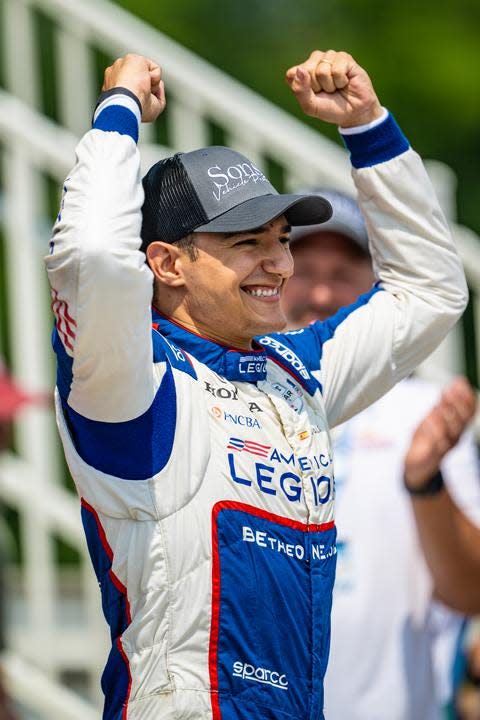
“I don’t think anyone’s going to challenge Palou right now,” said defending IndyCar champ Will Power. “But there’s going to be a great fight for 2nd-place.
Palou’s utter dominance of a sport that hasn’t seen a championship decided before the season-finale since 2005 is truly hard to quantify. In arguably the tightest, deepest, most competitive major racing series field in the world, the 26-year-old Spaniard has begun to draw comparisons to Formula 1 juggernaut Max Verstappen, the winner of six-straight races this season – and eight of 10 in a sport that’s notorious for single-team – and even single-driver – dominance.
Power’s words on Mid-Ohio’s post-race broadcast may be the first time one of Palou’s serious challengers has shown public signs of resignation. But there's just 51 points separating 2nd and 8th so the final eight races could turn into a riveting affair – if one simply blocks Palou’s calm, self-deprecating façade out of the picture.
As his challengers attempt to put on a strong face, here are some numbers and historical nuggets to show just how special a start to a season Palou’s fourth year in IndyCar has been.
More: IndyCar weighing several changes for 2024 schedule. Here's what's on the line.
More: Planned $89 million renovation 'a complete reimagination' of IMS Museum experience
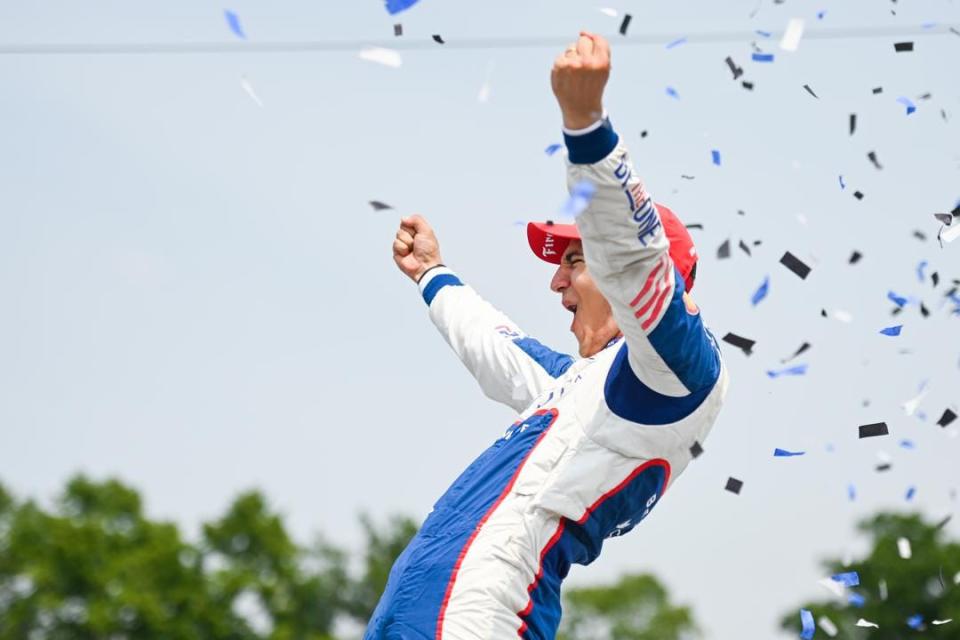
A hot streak for the history books
Palou is in the middle of a run of wins major American open-wheel racing hasn’t seen since the reunification of the sport in 2008. Not since the end of Sebastien Bourdais’ four consecutive championships in Champ Car from 2004-07 – which he capped by winning four of the final five events in 2007 – has a driver strung as many wins together in such a short stint.
For reference, seven times in the last two decades, IndyCar’s champion hasn’t won at least four races in the season.
Palou’s current consecutive race winning streak (3) isn’t nearly as rare, having been equaled 33 times since 1946, but should he win this weekend, the Ganassi driver’s four-straight wins will match something drivers have achieved only 10 other times since World War II – with the record set by A.J. Foyt (seven consecutive wins) in 1964. Palou's three straight wins has only been achieved five other times in a season (Ryan Hunter-Reay, 2012; Will Power, 2012; Simon Pagenaud, 2016; and Scott Dixon, 2013 and 2020) since reunification.
Palou has nearly led as many laps as all of Team Penske
Leading laps, as the top of this list shows, doesn’t necessarily connect to consistent race wins, and if a driver plays his or her cards right, they need not always lead loads of laps to rack up more than just a victory or two.
This year, however, Palou has done both:
1. Alex Palou, 246 laps led
2. Josef Newgarden, 163
3. Pato O’Ward, 154
4. Romain Grosjean, 90
5. Colton Herta, 64
6. Scott McLaughlin, 62
7. Kyle Kirkwood, 54
8. Marcus Ericsson, 43
9. Felix Rosenqvist, 40
10. Will Power, 26
The far more eye-popping stat, though, is this: Palou’s 246 laps led this year falls only five laps short of Team Penske (with three full-time drivers and three victories to their credit) -- 251. Andretti Autosport (208 laps led, pooled from three of their four full-time drivers) and Arrow McLaren (202 laps led from their three full-time entries) lag behind.
Without Palou, Chip Ganassi Racing’s other three full-time entries have combined for just 60 laps led in 2023.
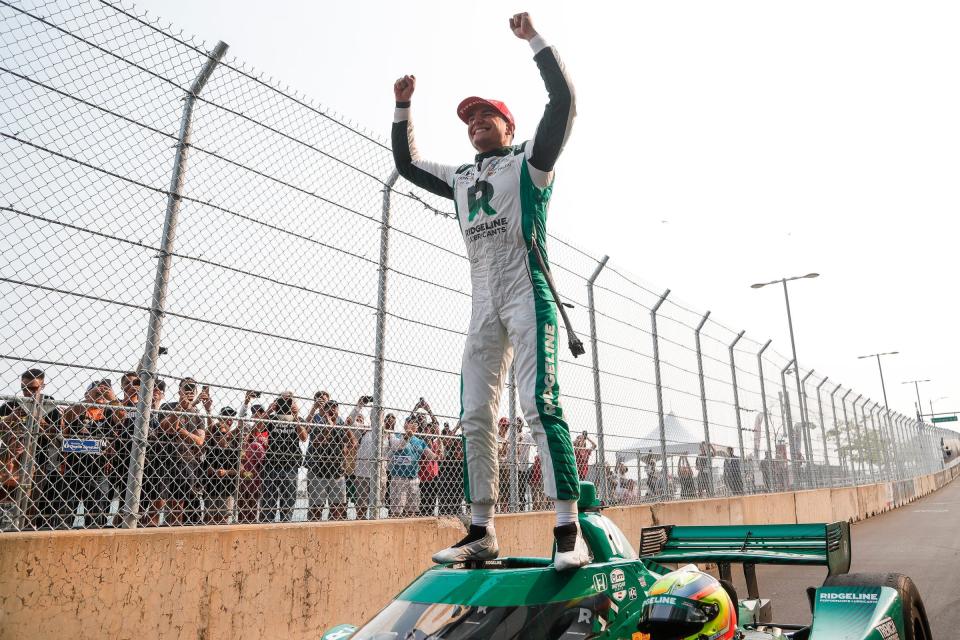
Excellence IndyCar hasn't seen in years
With the important caveat that his body of work completed so far in 2023 consists of just nine races, instead of the full calendars that have ranged from 14 to 19 races in recent years, Palou’s entire run of results this season is truly historic.
Of note:
>>Only twice in the last 20 years (looking at IndyCar post-reunification and the IRL before that) has a season champion has the best average starting and finishing positions (with another tied for the top average starting spot during his season). In those two former instances (Simon Pagenaud in 2016 and Dario Franchitti in 2007), both drivers only narrowly finished ahead of their closest competitors in their average starting spot on the grid (3.9 vs. 4.3 in 2016; 3.3 vs. 3.5 in 2007). At the moment, Palou is obliterating the field in both categories, with an average starting spot of 3.6 (versus the 2nd-best of O’Ward at 7.1) and an even better average finishing position of 3.2 (versus Dixon’s next best of 7.1).
>>For perspective, the largest gap between a series champ’s average finishing spot and the next best in the last 20 years belongs to Tony Kanaan’s 2004 title run (2.3 spots better, 3.0 vs. 5.3).
>>Kanaan’s lone title in 2004, coincidentally featured a worst finish all year from the Brazilian of 8th-place – identical to Palou’s worst finish so far this year. That season’s the only one from a series champ with a better average finishing position than Palou’s current mark. Only one other time since has a title-winner hit 4.0 or better (Franchitti in 2007, 3.8).
>>Since Dixon’s title in 2008, where he logged an average starting spot of 3.2, no IndyCar champ has finished with a better mark than where Palou currently sits (3.6). In the last 20 years, IndyCar’s best qualifier in a given season has only matched or beaten Palou’s current average starting spot seven times – and only done so once since the start of the 2012 season (Will Power in 2018, 2.8).
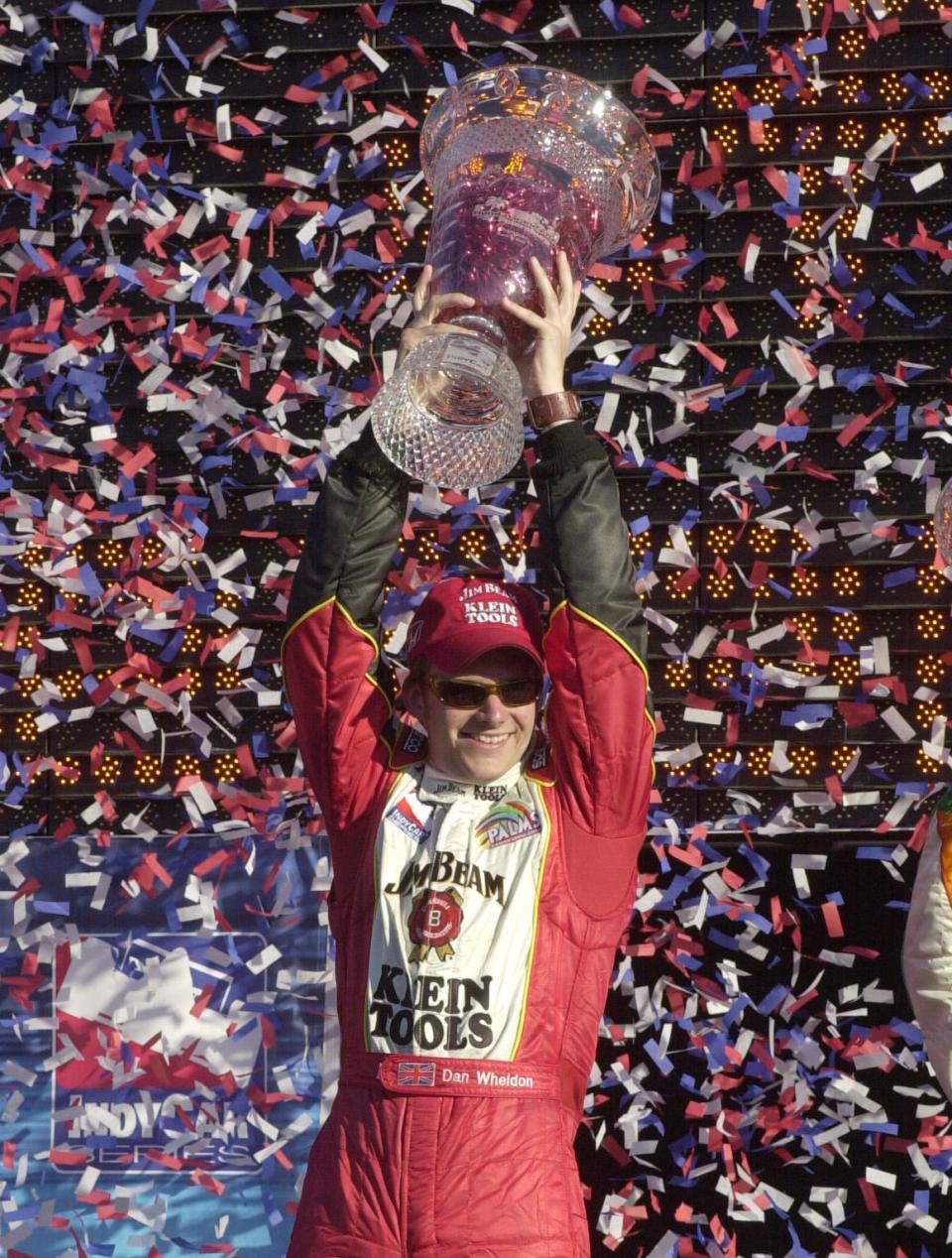
The last time a title was decided before the finale
To IndyCar officials’ dismay, Palou’s current form makes it increasingly likely he’ll clinch his second Astor Cup before the season-finale at Laguna Seca – something that hasn’t been done since Dan Wheldon’s championship in 2005. The year prior, Kanaan did so in similar fashion.
For reference, here’s a look at how those campaigns transpired:
>>Wheldon’s 2005: 6 wins, 9 podiums and 0 poles in 17 races; a worst finish of 21st (but only two finishes outside the top-6); average starting spot of 7.8 and average finish of 5.0; 73-point lead after nine races; won the title by 80 points, clinching it with one race to go and a 92-point edge (and nearly doing so with two to go and a 102-point advantage.
>>Kanaan’s 2004: 3 wins, 11 podiums and 2 poles in 16 races; a worst finish of 8th (and 15-straight top-5s to end the year); average starting spot of 4.9 and average finish of 3.0; 61-point lead with eight races to go; won the title by 85 points, clinching it with one race to go and an 80-point cushion.
Targets for Dixon, Newgarden, Ericsson and O'Ward
So, with that all in mind, what do Palou’s closest challengers have to do to pull even by the end of the year?
If you assume one of Dixon, Newgarden, Ericsson and O’Ward – with just three wins between them this year – can replicate the type of run Palou’s been on of late, then it’s remotely possible. Here’s the average gaps they’d have to make up each start between Toronto and Laguna Seca to do so from where they currently stand:
2. Dixon (-110): 13.75 points per race
3. Newgarden (-116): 14.5
4. Ericsson (-122): 15.25
5. O’Ward (-127): 15.88
It’s hard to imagine Palou not winning at least once more this season. He, strategist Barry Wanser and the No. 10 Honda’s pit crew and team of engineers can seem to do no wrong at the moment. While they might find themselves a short patch of bad luck or make a mistake or two, their best days seem far and away better than anyone in the field.
So let’s say Palou wins just once more this year. With 51 points from a victory and a lap led, the best one of his challengers can do would be 44 (2nd-place, pole, most laps led), which would add 7 more points to their gap to Palou, in a race where they needed to make up 14-16 points. For, Dixon, that 14-point swing would mean he’d be tasked with gapping Palou by an average of nearly 17 points the rest of the season, instead of just 14.
There is a small window of hope. If you can ignore that this set of races came under the duress of being sued by his team owner, we have a stretch of performances in this very set of races – the final eight of 2022 – that, should Palou replicate, could offer an opportunity for a comeback that would be remembered for decades.
By no means was Palou’s end to last season a disappointment, coming with two podiums and a win in the season-finale, but it also saw four finishes between 6th-10th and two more outside the top-10.
If Palou were to score the identical 224 points from 2022 over this year’s final eight races and finish with 601 on the year, here’s how many points the rest of the top-5 would have to score per race to make up their current gaps:
2. Dixon: 41.75 points
3. Newgarden: 42.5
4. Ericsson: 43.25
5. O’Ward: 43.88
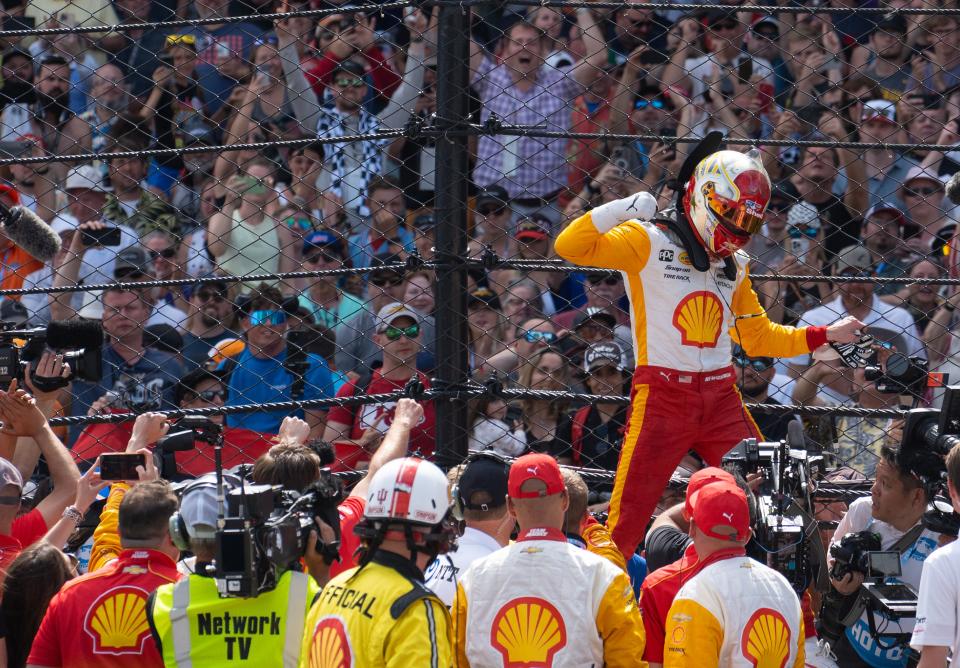
Why Newgarden still has a chance
Among Palou’s challengers, one stands above the rest. Had he not suffered a mechanical failure near the end of last year’s second race at Iowa Speedway, Newgarden would be the owner of a calendar sweep of IndyCar’s current oval races. Even without that freak accident, the Team Penske driver has won the series’ last three oval races, four of the last five, six of eight and seven of 12.
In particular, short ovals (like Iowa and WWT Raceway) seem to be his bread-and-butter, which conveniently matches the type of track Palou (and CGR as a whole) has been a step off on. In four short oval starts with Ganassi – including a crash not of his own making at WWT Raceway in 2021 that left him 20th – Palou has an average finish of 12th, which would equate to 18 points each race.
Should Newgarden sweep the doubleheader at Iowa and the season’s oval finale at WWT Raceway (as he seemed primed to a year ago), and if he were to come away with a single pole from those three races and lead the most laps in them, this year’s Indy 500 winner would total 160 points in that trio of starts. Palou, with no laps led and an average of 12th, with come away with 54.
That’s 106 of his 116-point gap to Palou erased, with five other road and street course races for Newgarden and his No. 2 Chevy crew to try and find some much-needed magic and turn the tides of 2023.
This article originally appeared on Indianapolis Star: IndyCar: Alex Palou on historic pace but Josef Newgarden may challenge

